Jurell Cayetano on the Importance of Representation
- 5 November 2018
- ByNilina Mason-Campbell
- 16 mins. read
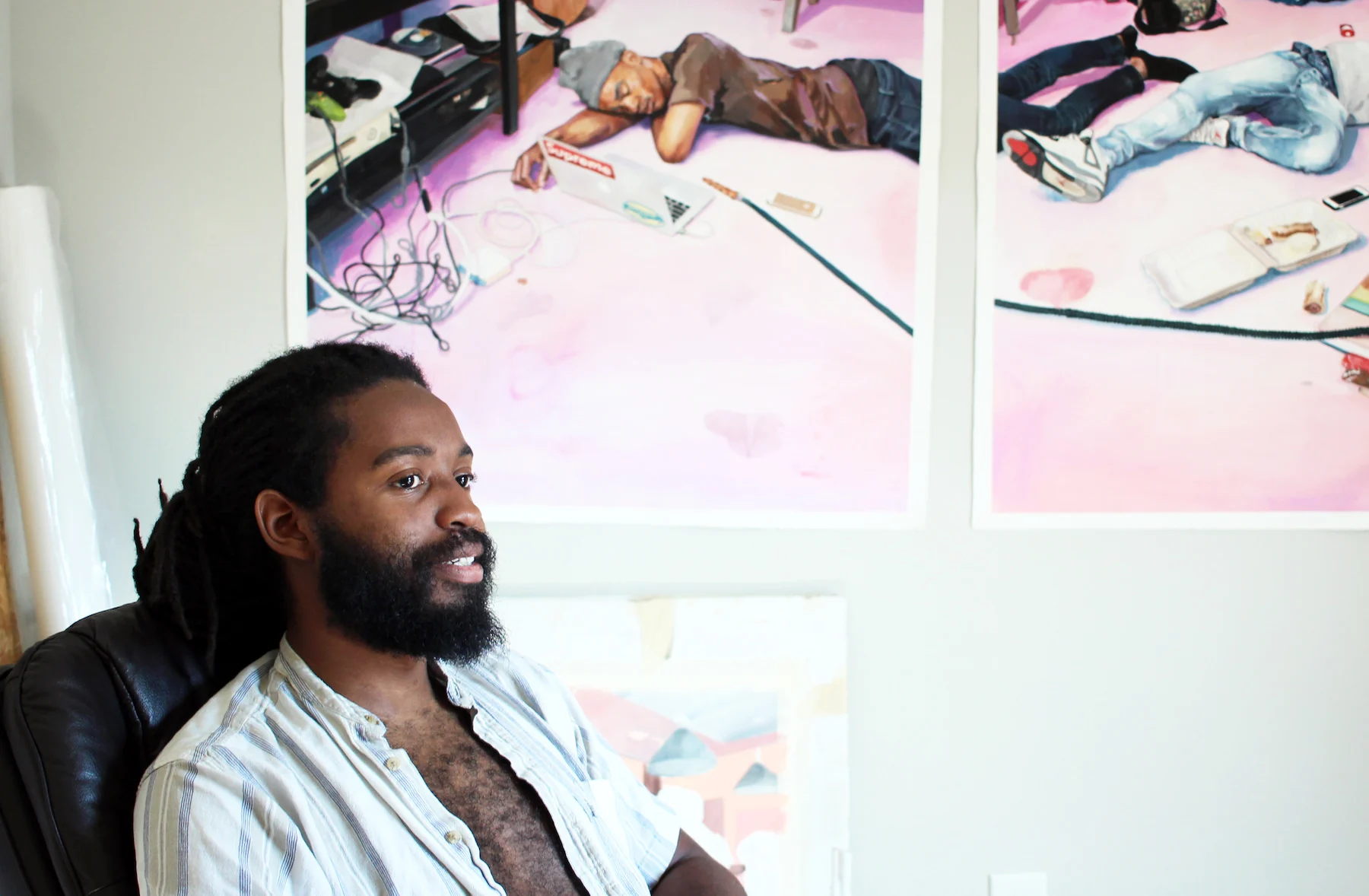
Jurell Cayetano first set the internet alight with his painting of its favorite and highly-memeable swindler Joanne the Scammer.
The striking portrait started collecting likes almost instantly after he posted it in August 2016, then triggered another spree after Joanne’s creator Brandon Miller caught notice and reposted it to his nearly two million followers. The frenzy of attention translated into thousands of new followers for Cayetano.
No matter what corner of the internet you lurk, fan-art is an ever-present force, but this portrait was different. Set against a magenta background, the artist brought the iconic character to life with blunt and broad brush strokes - a signature of Cayetano’s work - complete with colors that would seem incongruent, yet come together in an otherworldly and entirely harmonious way. In a way, his fine-art rendering proved to be just as iconic as its subject.
Drawing upon photos he takes himself, his detailed, intimate portraits often depict the most casual of settings: often simple scenes featuring his creative friends that orbit the Atlanta, Georgia, scene. A hue of melanin carries throughout his work. It’s a depiction of black life that’s conspicuously absent in the fine art realm. Music making, phone scrolling, hair doing take a turn for revolutionary in his depictions; real-life scenes of youth often ignored in the mainstream.
Cayetano is in his element when surrounded his tools of the trade; gouache paints, watercolor paper, and an assortment of brushes. He’s now a full-time artist, supporting himself via print sales generated from his online shop and custom commissions. We met up at his East Atlanta apartment to talk about the internet’s impact on his career, the best advice he’s received, and the importance of representing people of color in his work.
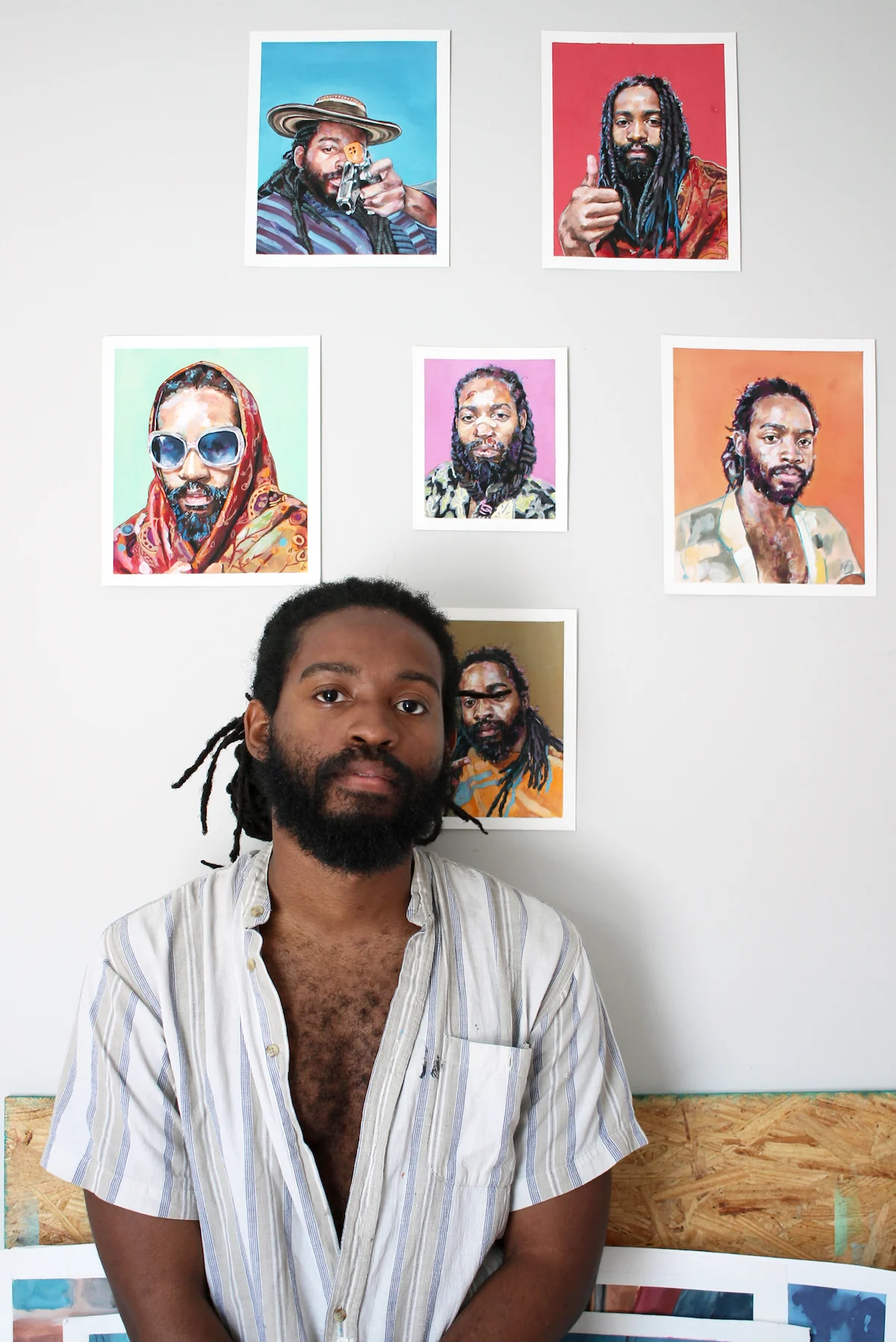
Photography by Nilina Mason Campbell.
How long does it take you to do a painting?
It really depends on a lot of factors. At my best, depending on what it is, around three days. But sometimes it’s like a month or a couple weeks. It really varies. It’s half about what I have going on and if there’s a rush on it. Like if you tell me something has to be done in a couple of days, I can paint pretty fast. Or even if it’s just up to me, a single or portrait, I can do that in a night.
You mentioned that in the beginning you didn’t know how to get prints together - how did you gain that knowledge? Did you pursue that? Or did somebody tell you that you needed to get some prints made and how to do it?
It was a little bit of both. I was asking around to my friends that I knew had started making a living off prints. They were telling me how they did it. But I still didn’t really set out and decide how I was going to do it. It took one person, he’s like this really big artist out here, telling me ‘It’s really simple, just do this.’ So I started using printers, and then...
Was it a professional-grade printer?
The first couple, no. But he was just like, forget all that. Because he sells enough, he has a kid and a wife, and makes enough to support all that. So whatever he said, I decided to listen. It was keeping me back, worrying about all that other stuff. He told me to just get it out and build from that, that people just wanted my work.
What’s your process like for managing your print sales and mailing them out?
That’s rocky. I usually send things out whenever I get a bulk order and just send them all out. It is my job, but it’s the only thing where I sit and it’s a routine thing. Sometimes life gets in the way and I don’t send things out as quickly as possible. I’m not Amazon. I’m still a human being. Even now I haven’t been able to send things out because I’ve been in the middle of moving. I don’t even have internet in the house yet; I’ve been using other people’s wifi. So I’m down right now.
I tell all my customers - I try to keep them up to date. If I’m really late on something, I give an extra print or do something to show I’m sorry. As far as time goes, outside of actually painting and commissions, it’s that third chunk. Actually working on painting, painting for myself, doing commission orders, and then printing and sending prints out.
I condense it as much as possible so it isn’t a constant back and forth to the post office every single time I get an order. That isn’t cost effective for me.
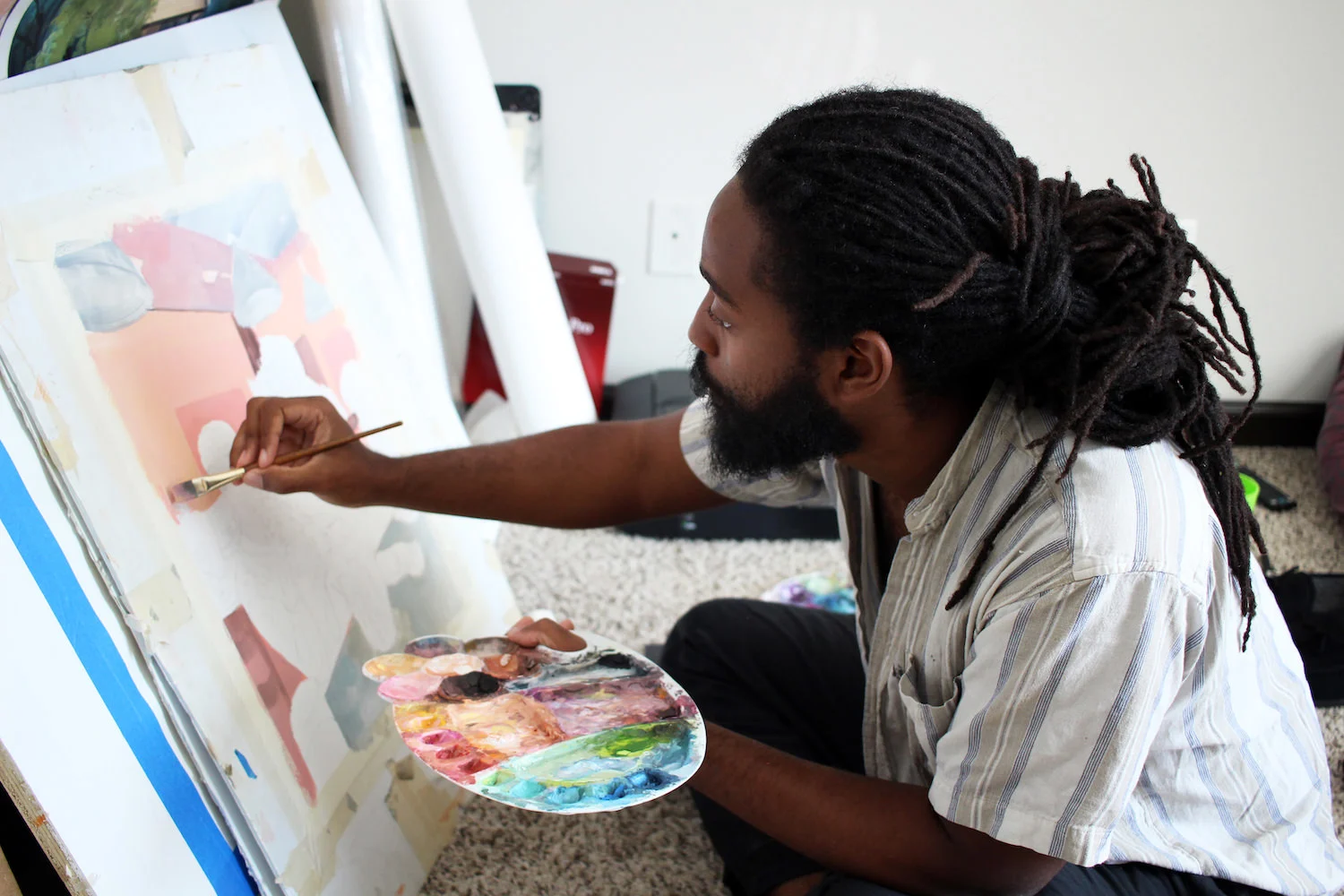
What was your experience at school like?
I went to school in New York. That was very solitary. I couldn’t really relate to anyone there. I’m very anti-social. Not anymore, but I was back then. I went with the sole intention of learning as much as I could and being the best artist I could be. When I got there I thought it would be something like Harry Potter, where everyone there is in the same mindset and it would be like being in the community of artists I had always wanted to be around. Because at my high school there weren’t very many people doing art at all - it was frowned upon.
So I never had a sense of community, and I thought the school would give me that. It is that way, but a lot of people there weren’t really serious. I kind of kept to myself. It became a kind of self-imposed solitary confinement. After my first year I got a dorm room with a room to myself, which was like half the size of this room. I would literally just stay in there. I wouldn’t hang out with anyone or talk to anyone. I didn’t go any places. There were days on end, days in a row where I didn’t say a single word to anyone.
Wow. Did you last the whole time in school? Were you fine with that?
Yeah. It was actually very integral for me. It’s weird. I don’t look back at that time as a bad thing.
Yeah, maybe less depressing and more living like a monk.
Yeah, I was a full-fledged monk.
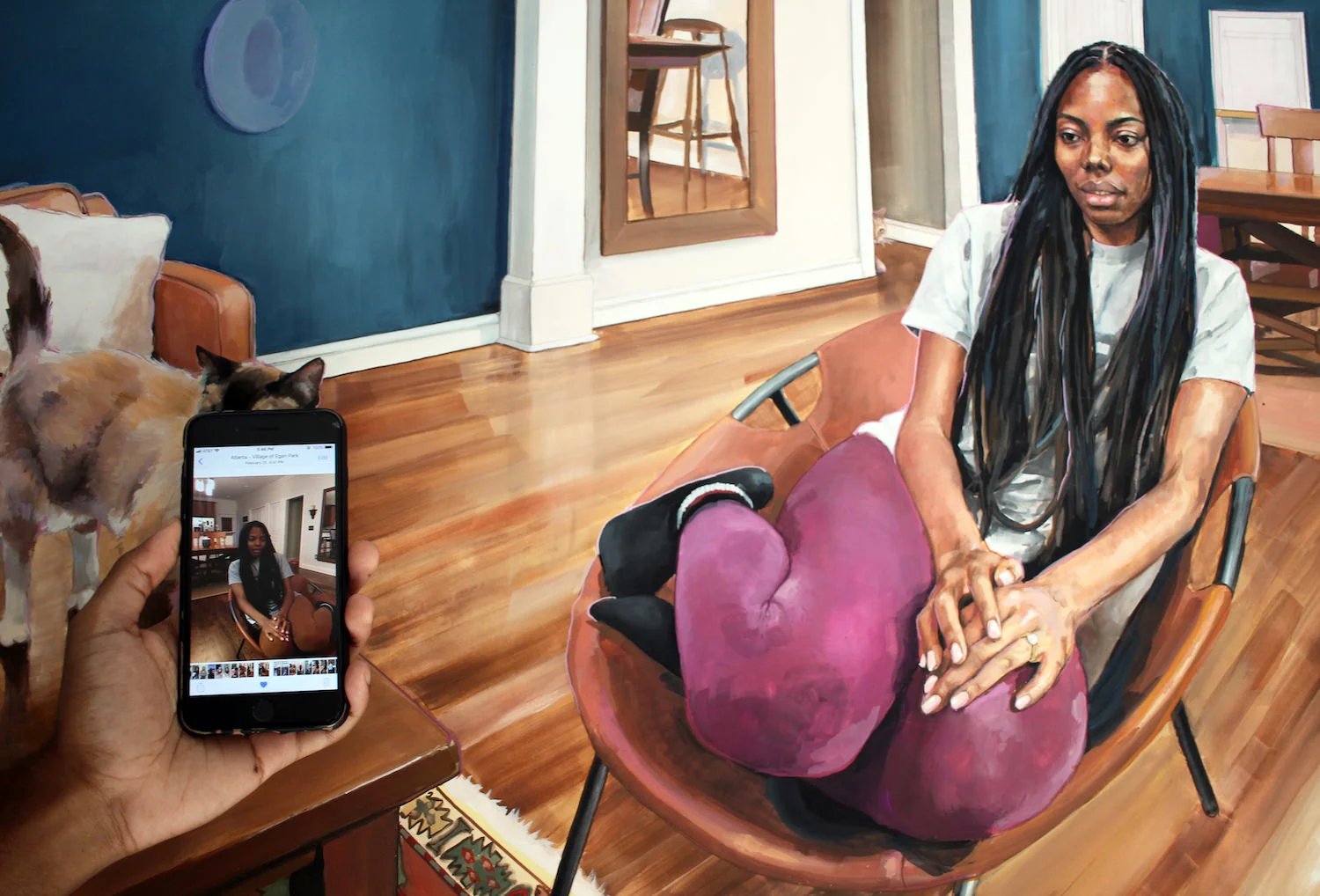
In terms of subject matter, have you always been painting your friends and people that matter to you?
No. I fell into this after leaving school. In school, I went for illustrating, and most of the assignments were to paint representations of stories, and most of the stories were white characters. So I was painting a bunch of white people. All the models that were there in the live model classes, live painting and live drawing, were white women and stuff like that. I got it into my had that if I wanted to be an illustrator, I would just be painting other people’s stories. I always had that skill set but I never really got attached to it. If I’m not attached to something, it’s harder to get up if it isn’t true to me.
I left school still trying to paint the way I had been. I had developed a style I was OK with once I graduated. But it still didn’t feel right, it was missing something. I started taking pictures of my friends and using those as reference. It became way more true to me because it was my voice instead of someone else’s. Through doing that, I took a step back and just forgot everything I learned in school and just did what felt natural to me. I went back to using gouache, which is one of the first painting mediums I used. This naturally came of it. That all happened two years ago.
Rather recently still. After seeing the Joanne the Scammer portrait, I thought wow, this kind of representation, I just don’t see that. Painting at this level with all people of color. It was so intriguing to me. Do you get a lot of feedback in that respect, of people drawn to that?
Yeah, I feel like a lot of people are drawn to me through that. It makes me really happy I can do that. There really aren’t a lot of people representing that in the right way, in a natural way. It’s either, I don’t want to say fetishized, but that’s something I really hate about it.
It’s really up to us. I don’t even know who “us” is, but I felt a need to be as honest as possible. I’m not dressing up my life or the people around me, this is like really what goes on. That’s why people have gravitated towards it. People love realness, nobody likes stuff that is too posed.
Pristine?
Pristine, yeah. Something like that. I just knew what I don’t like and I would never make that myself. I feel an obligation to put out work that has a soul. A lot of things can become soulless when it’s just pushed out and made for a reaction.
I feel like culture has more of an awareness overall.
Yeah, and people are being called out much quicker now. You can’t get away with anything, or with doing something that’s inauthentic.
Are you thinking of something in particular?
No, not really. The one person I can say - there’s a difference between showing black people in that same artsy vision with a very refined aesthetic. OK, who am I thinking about? The guy that made Twelve Years A Slave.
Steve McQueen.
Yeah, before he made that movie you wouldn’t have known he is Black.
What’s that movie?
"Shame". He uses the same actor, Michael Fassbender.
Yeah - I look back, ‘Oh, a Black guy made this? He has a good eye. He can really do something with that.’ Then he made Twelve Years A Slave, and it was like, ‘OK, it’s a slave movie but it’s pretty.’ He has the platform to do things like that.
I’m friends with a lot of people that are really exceptional directors and visual people that are slowly coming up. For example, the person that I painted, Lacey Duke, she works with Janelle Monáe a lot. I think she did some of the stuff for her -
Dirty Computer?
Yeah, she’s pretty involved in that, I think.
Do you know that Netflix short they just released where it’s all the black actors?
I haven’t watched it but I’ve seen it come up on Twitter.
She directed that.
Oh, really? Wow. The fact that was even a video, when it hit on Twitter and I saw all the people appearing in it - I don’t think that’s something that would’ve been happening five years ago, and definitely not in a way where you’d hear about it.
Yeah, all this rambling, it’s to say that it’s happening now. The people that are able to make that change and start showing people of color in the same way white people have been doing for years, that’s happening now.
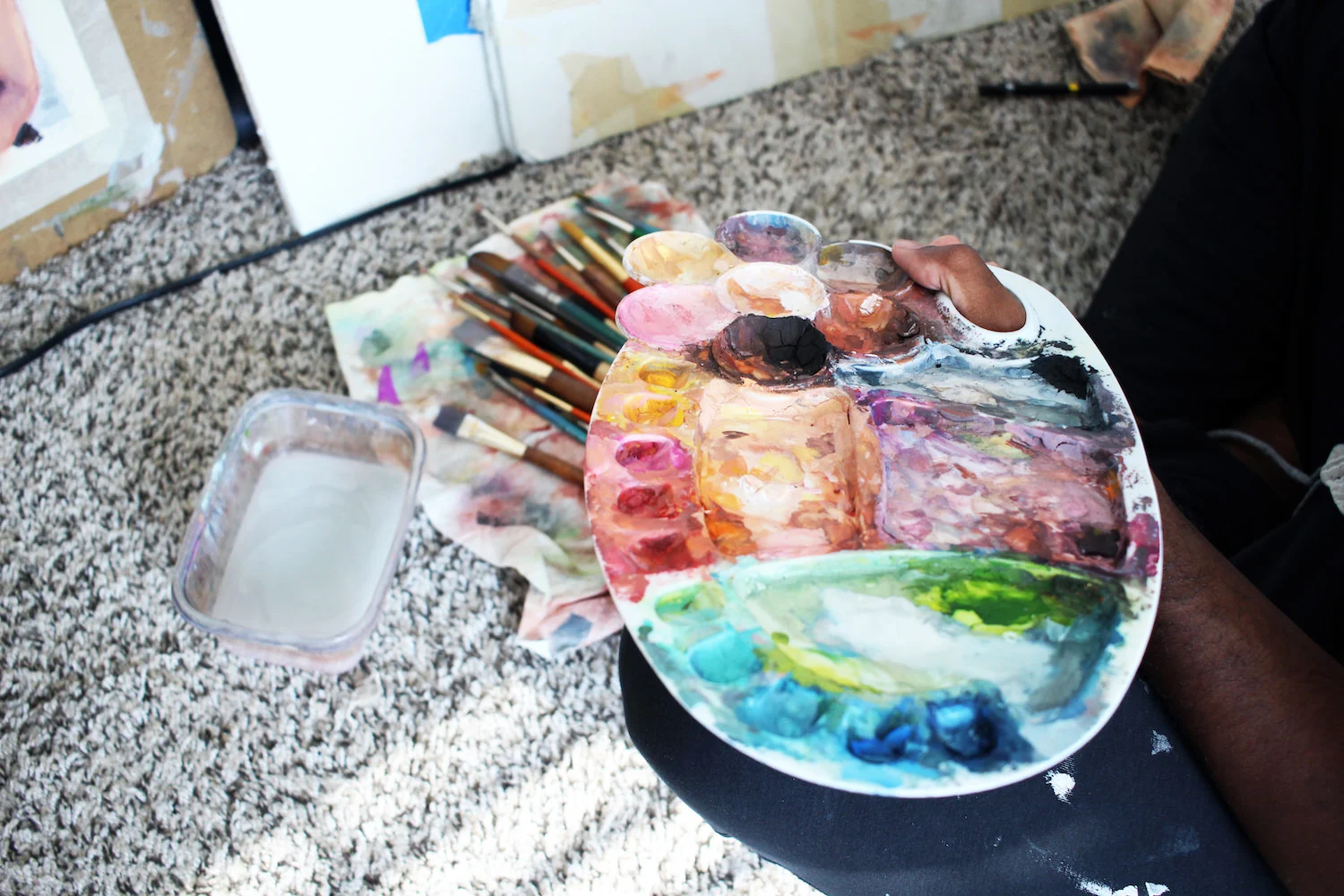
In terms of where you’re at now, what are your present ambitions?
Really just to keep going. I haven’t really gotten to that - breaking into that white world, fine-art gallery setting. I want to be in like the Gagosian and be able to sell shit through Sotheby’s. That’s the goal. Even if that isn’t the case, just having as many people know, not only about my work but the work of my friends also. That there are people out here making work of quality and we’re Black people and people of color. That’s pretty much it.
How integral do you feel social media is to your platform? In terms of exposure for your community and friend group as well.
I literally can’t imagine how I would be doing what I’m doing now without it. That’s another thing. It has opened up another lane for people like me. It has really changed the game.
At a certain point I would hate it; the only way most people have seen my work is through their phones. As an artist I want people to see my work in a setting, in its actual physical form. But I can’t deny that this is really powerful, shooting my work directly into people's eyes. Quickly. I don’t know how many people have actually seen my work. More than I’ll ever know. But it’s cool. I go through my phone and scroll and see other artists’ work; I don’t have the same experience but I’m still impacted. And I know there are people who make work solely for that, work that exists only in the digital context. That wasn’t possible before.
How much time and effort do you put into your social media?
None.
I feel like I’m lucky because my work does it for me. I finish something and if I want to post it, I post it, and I take a nap. I just post it and from that, I get feedback and then a commission and sales. Other people just share my work. It lives outside of me. I really have no control over how it is. I get tagged in stuff everyday. Sometime people just use my work and caption it, like ‘this is me today.’
Like meme style?
No, not meme style. Where it’s like, especially some of the paintings I have, where it’s like women doing their hair. Someone will tag and say ‘this was me 2 days ago.’ Or ‘my hands are hurting.’ It’s so random. I can just scroll through and see one of my paintings is someone’s profile picture.
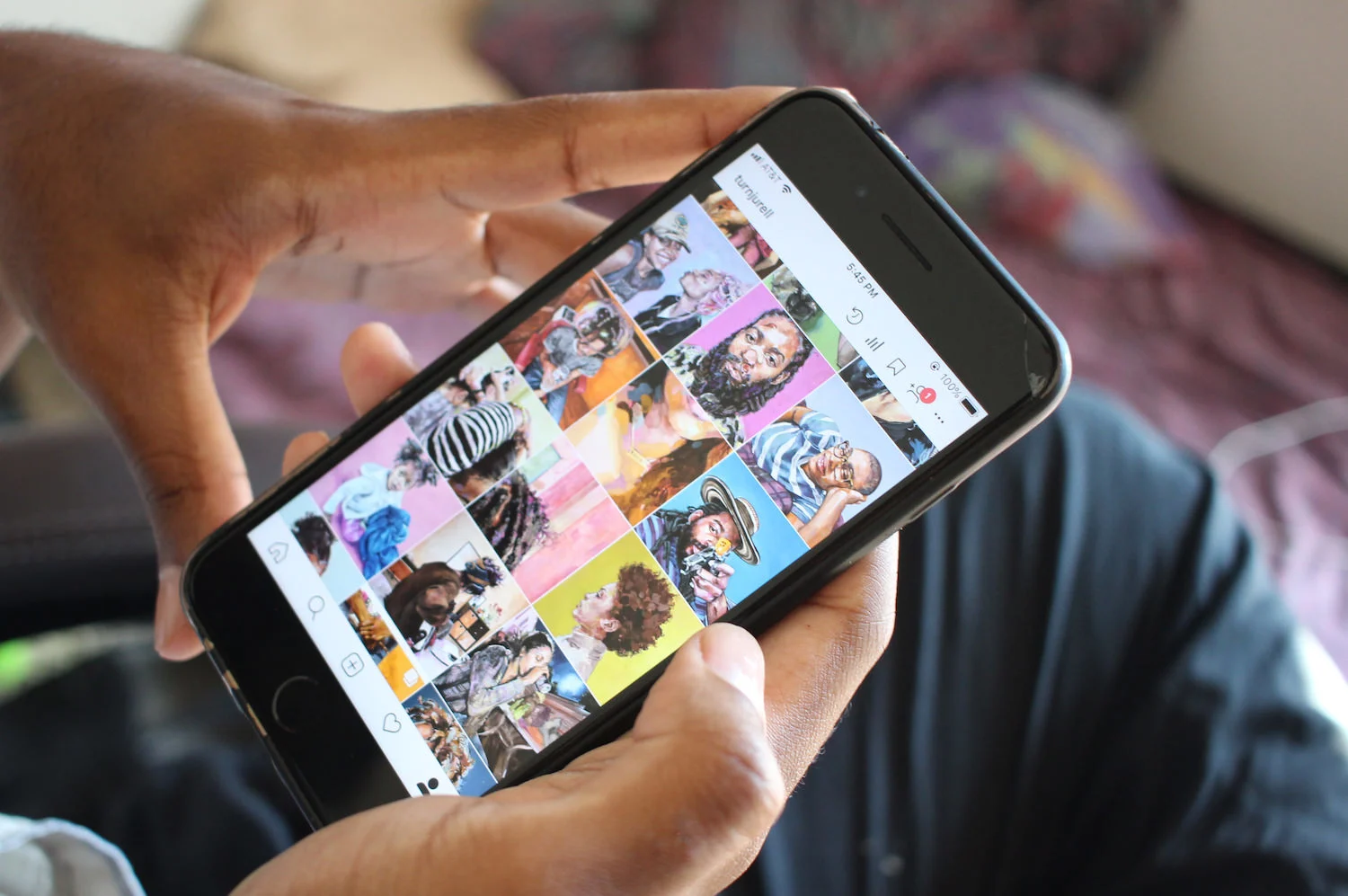
Do you feel any possession over that? Or is it just exciting to you?
No, I love it.
Once I make these and it’s out in the world it’s living its own life. And it can only do me and the work good. The more people that see it and the more people touched by it, the better. I don’t want to dictate how someone experiences or enjoys my work. It just makes me feel good they enjoy it. Every time I see it, unless you see someone like editing my shit, then it’s like, OK, no. But if you want to share it and feel touched by it, that means a lot to me. So I don’t mind.
You can buy prints of Jurell Cayetano's striking artwork in his online store and give him a follow on Instagram.
5 November 2018
Words by:Nilina Mason-Campbell
- Share